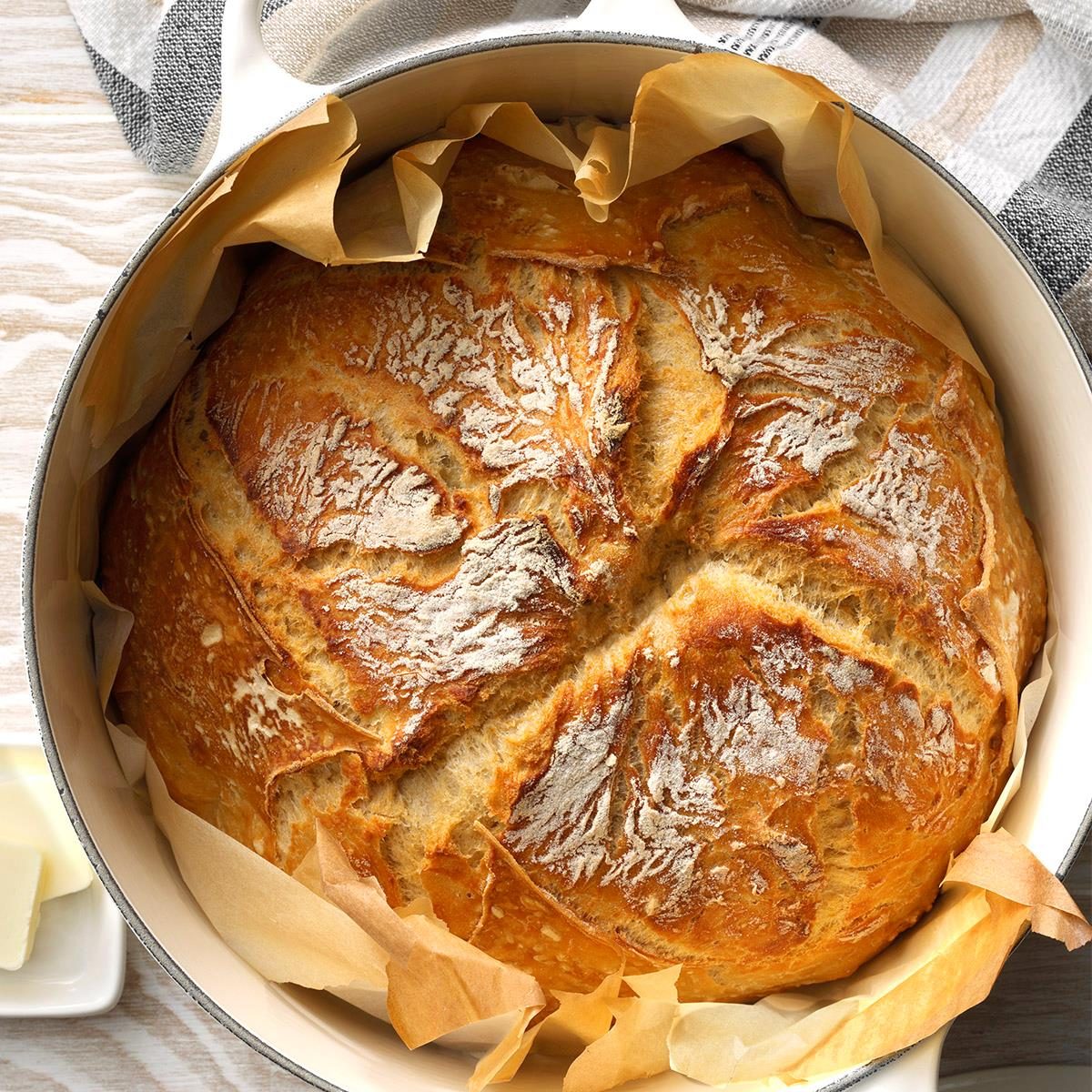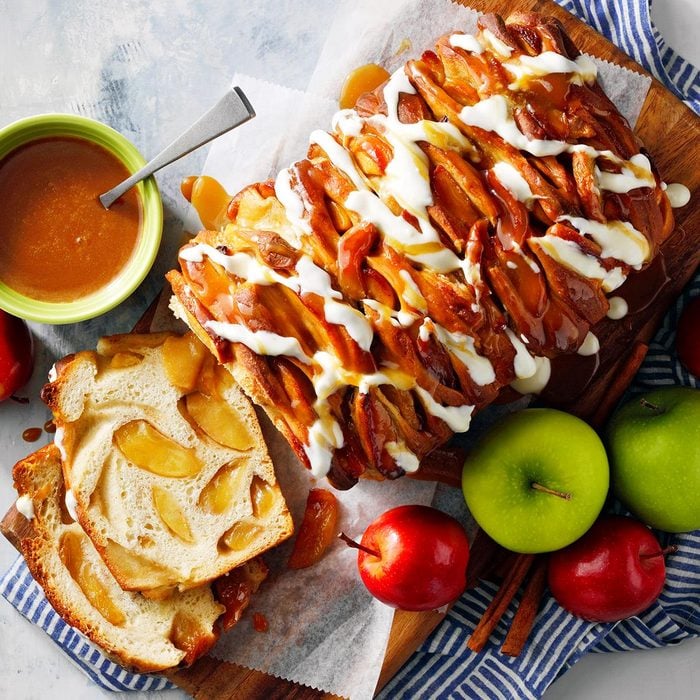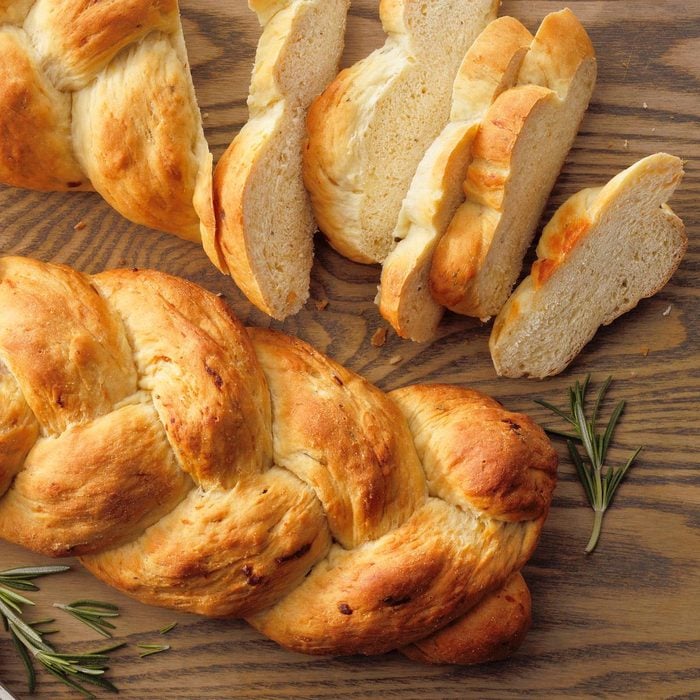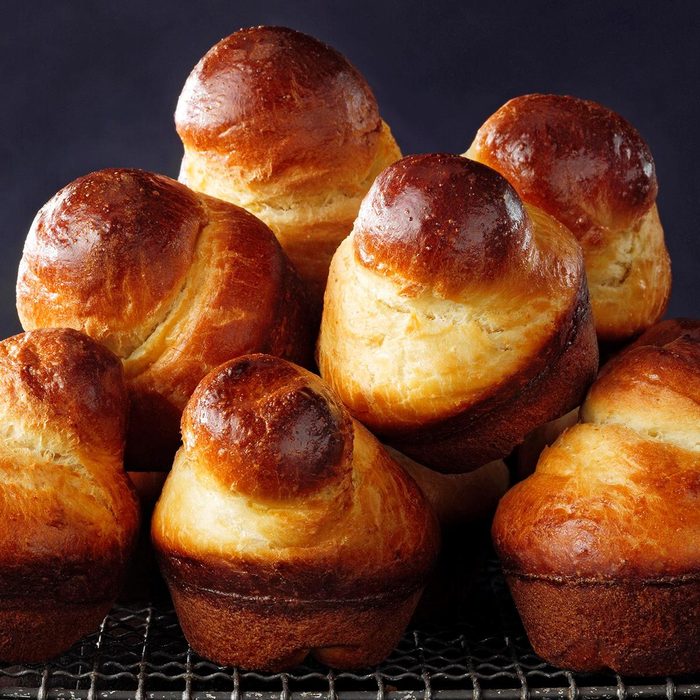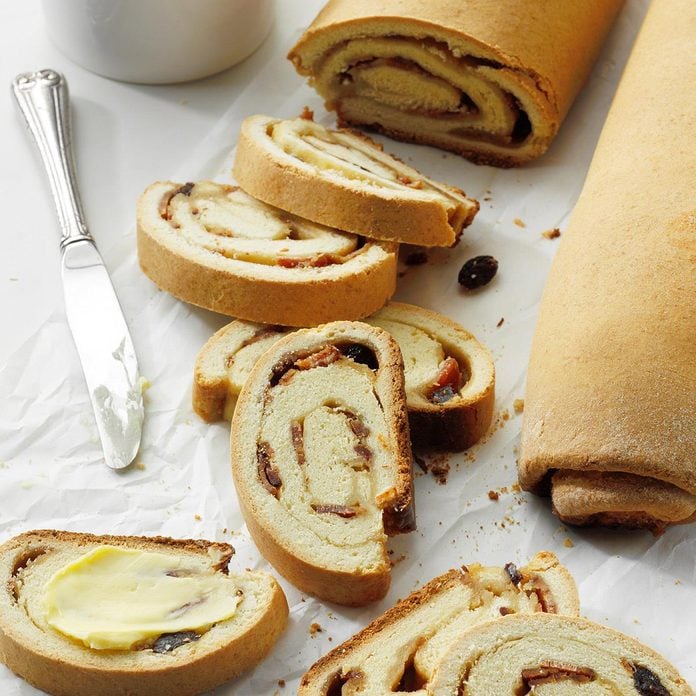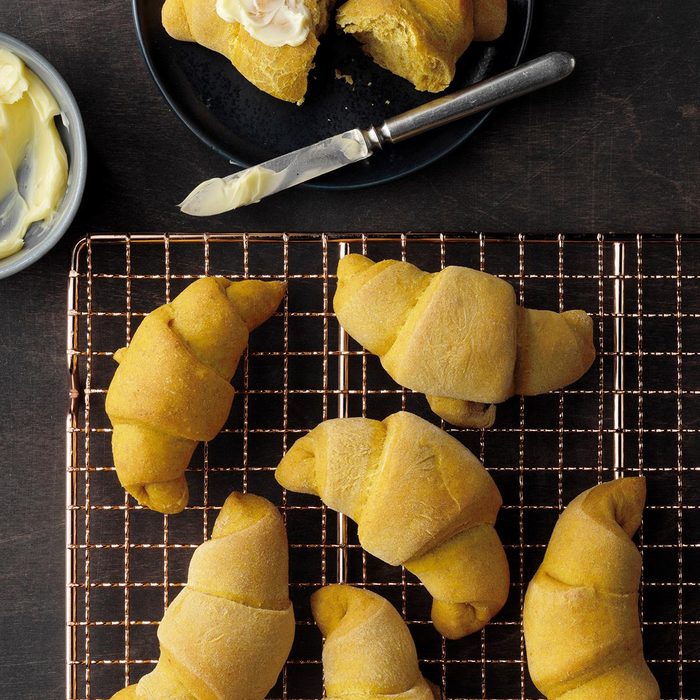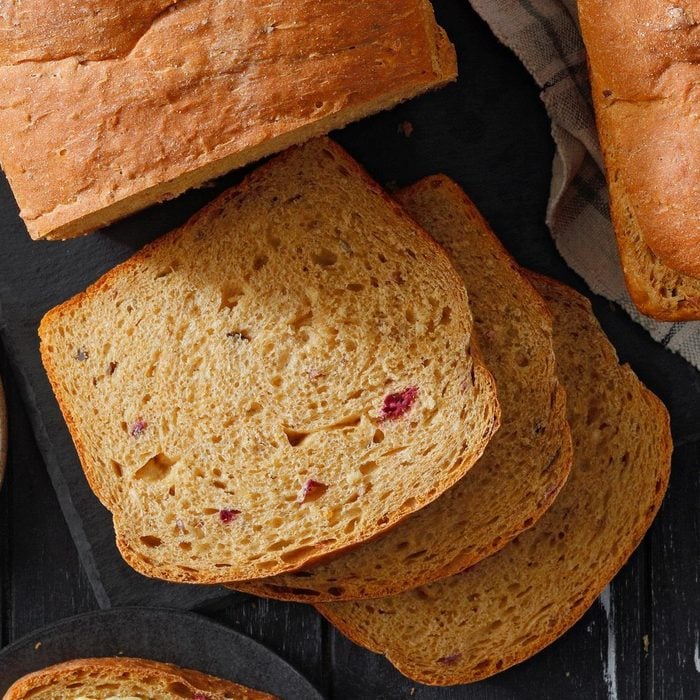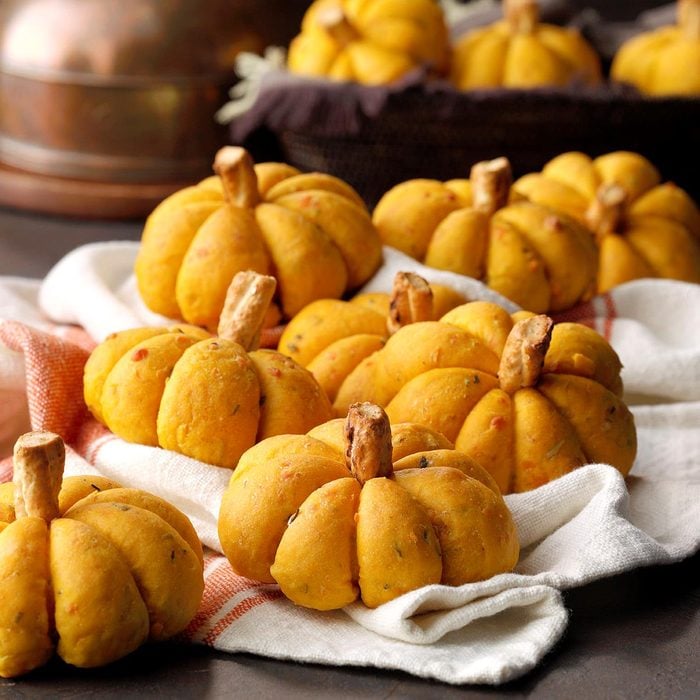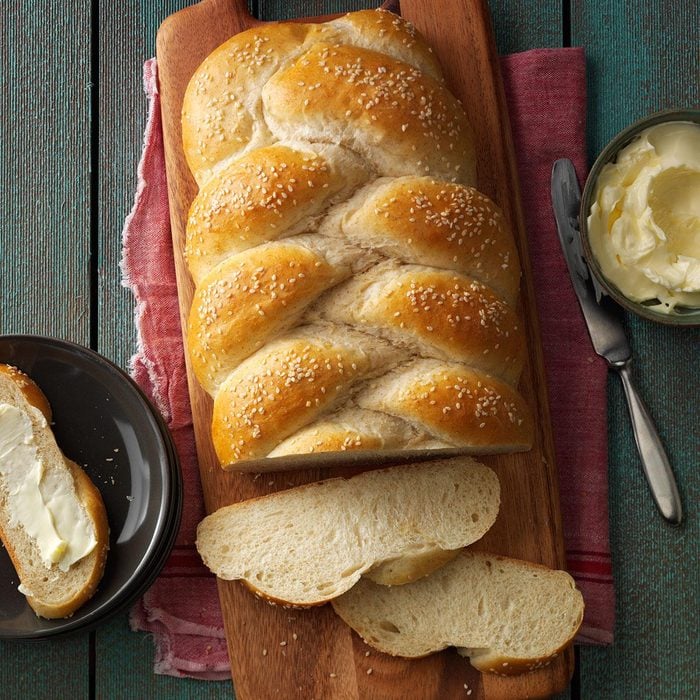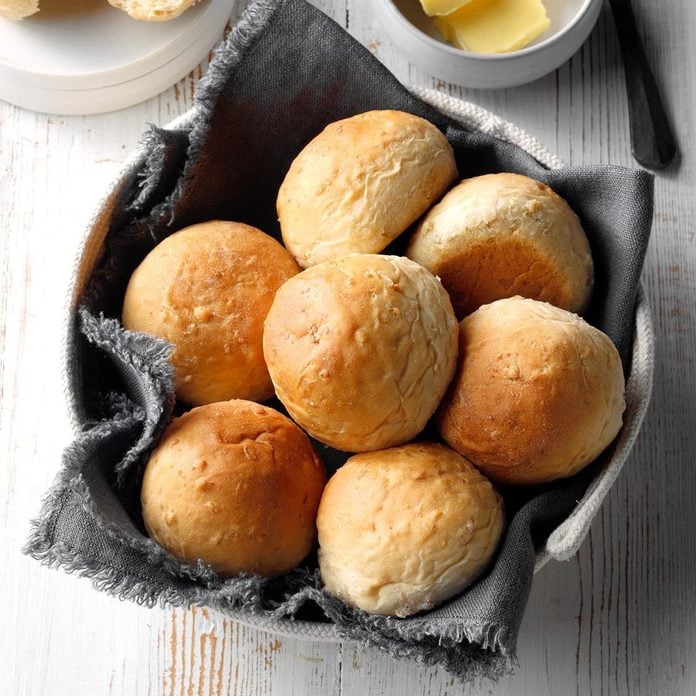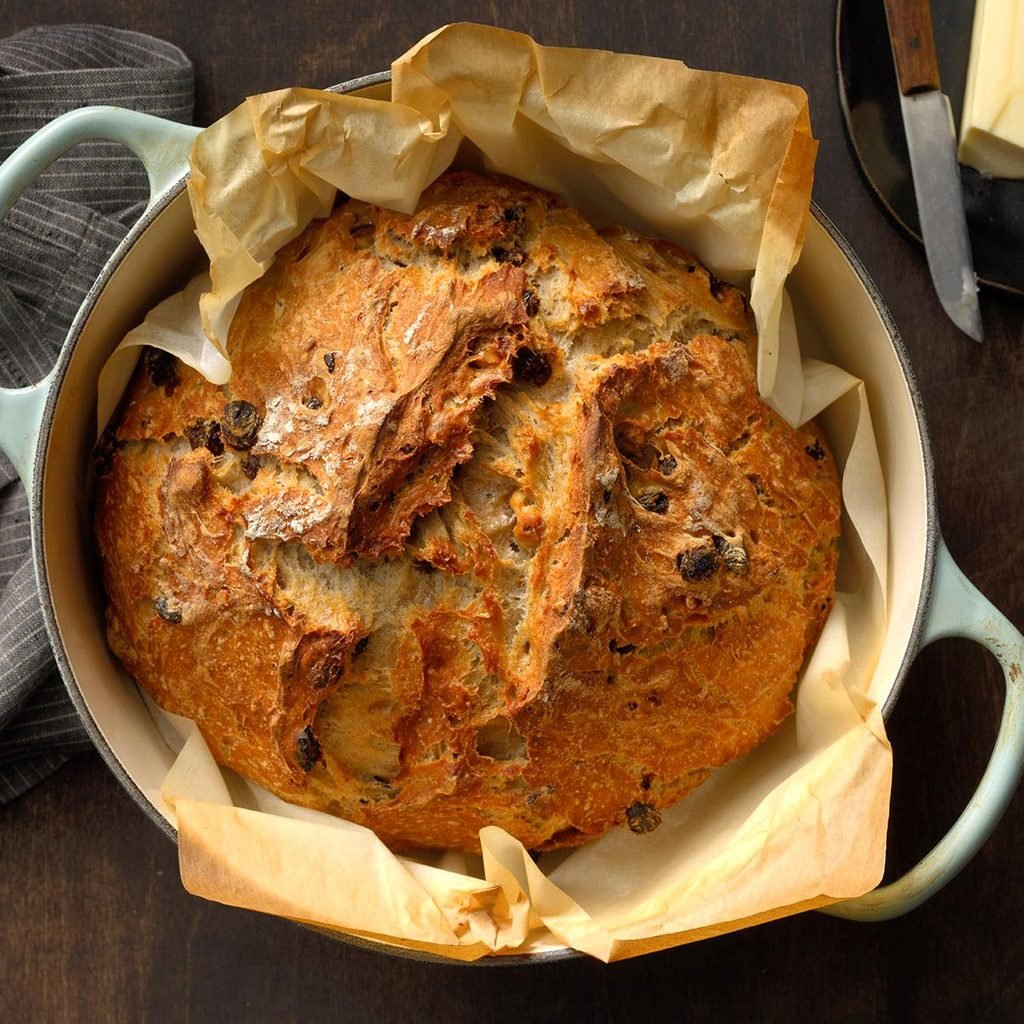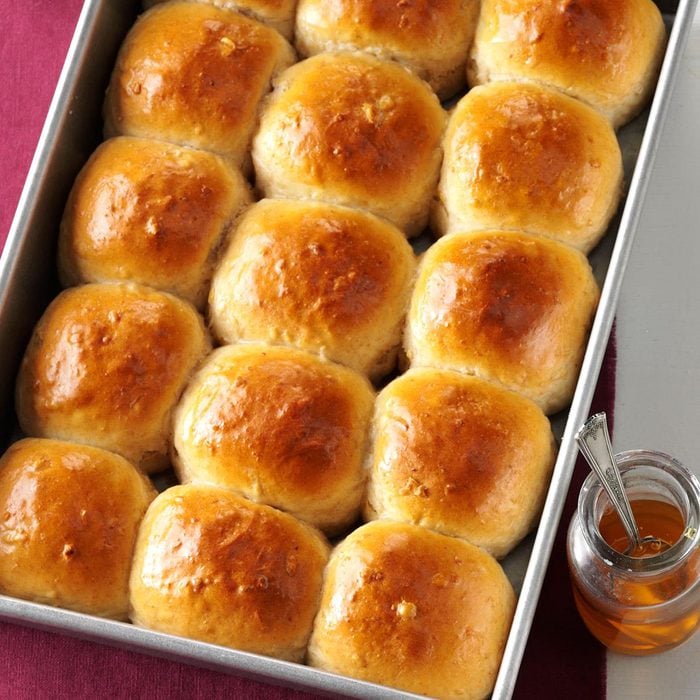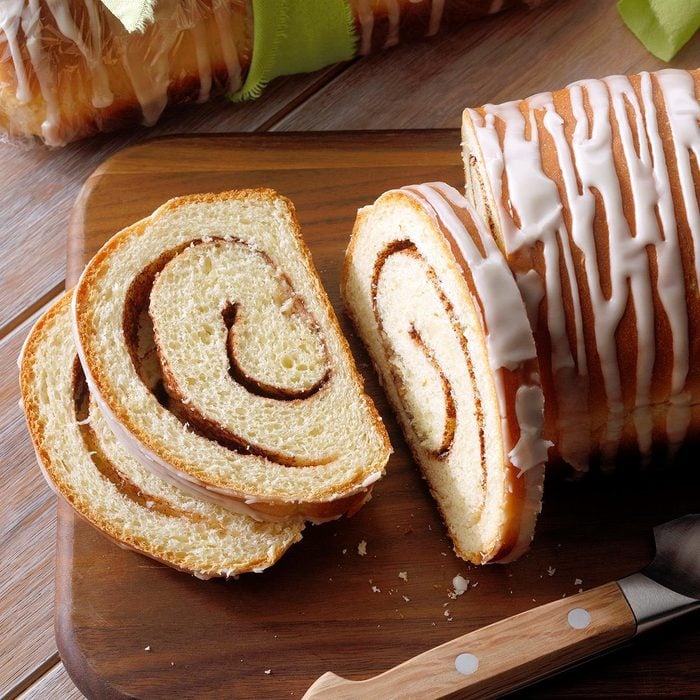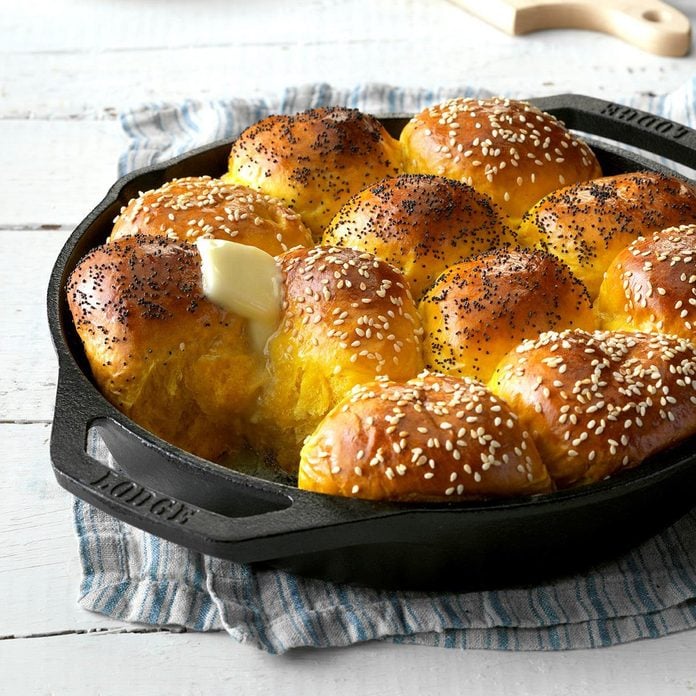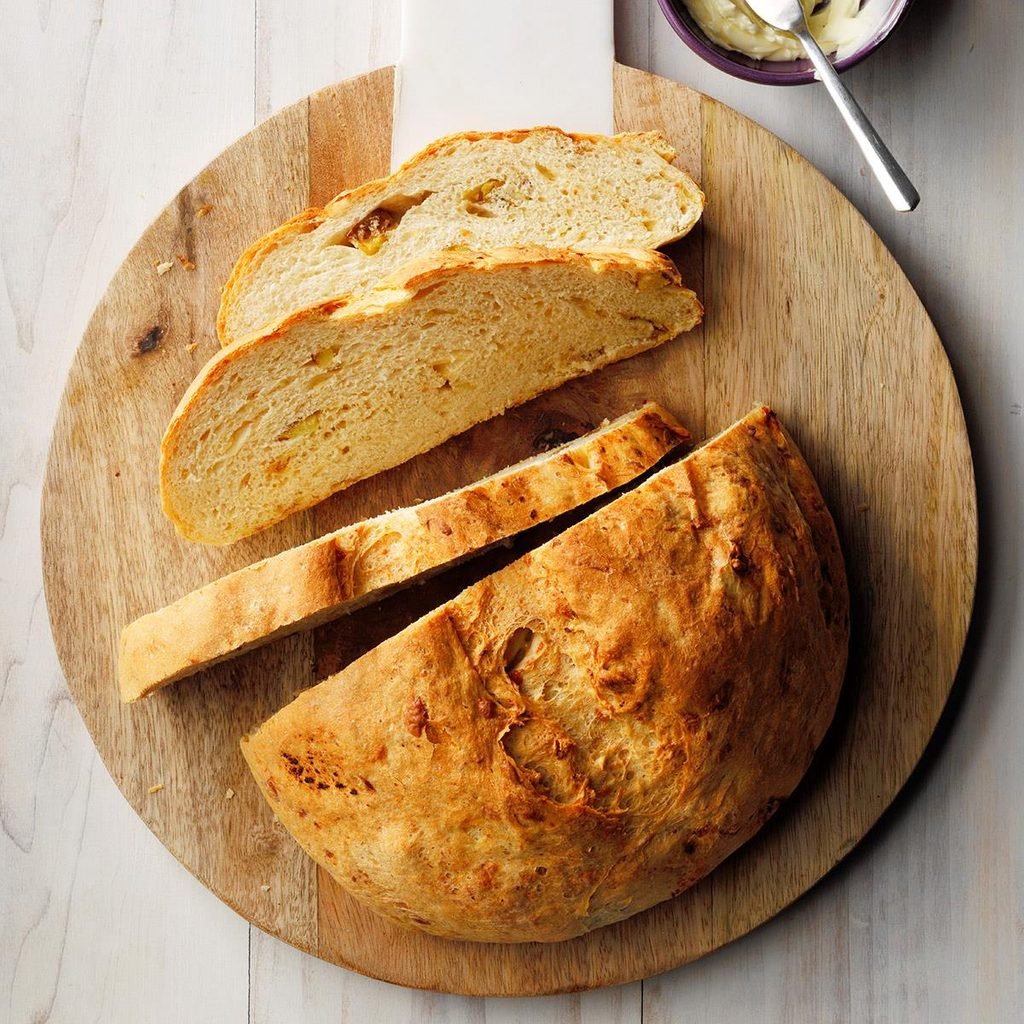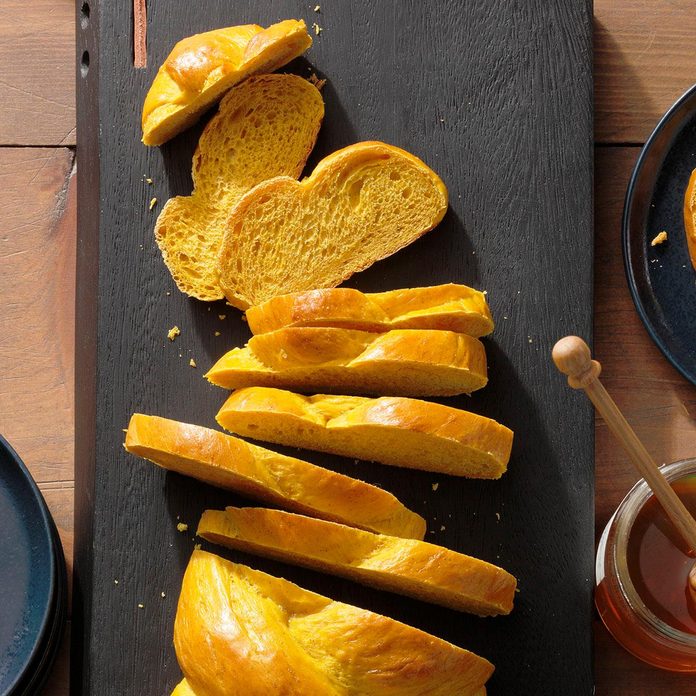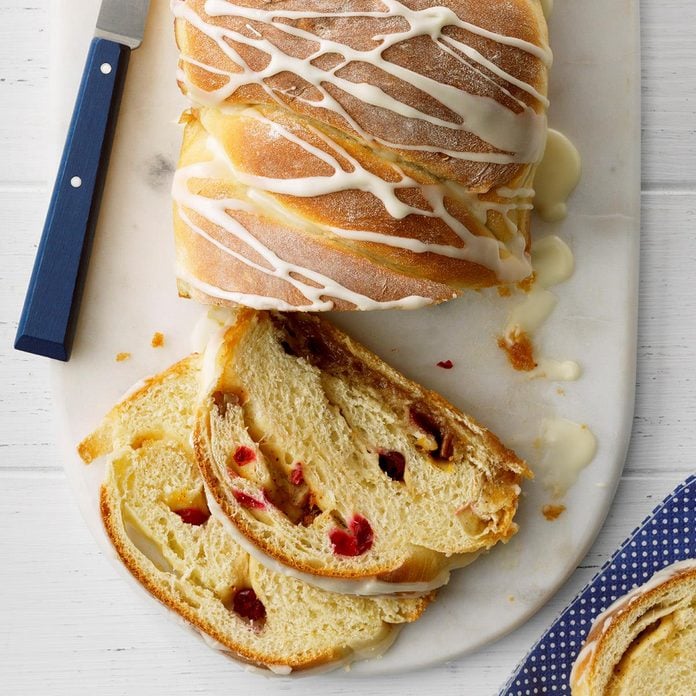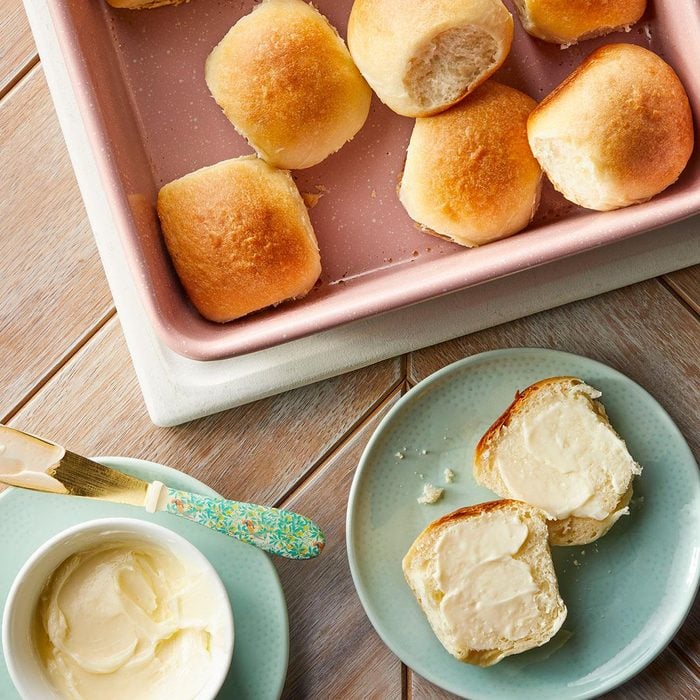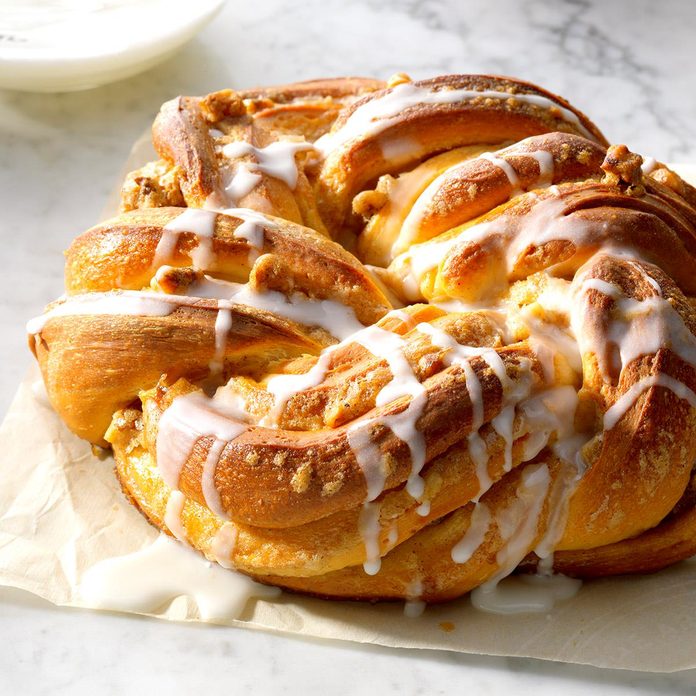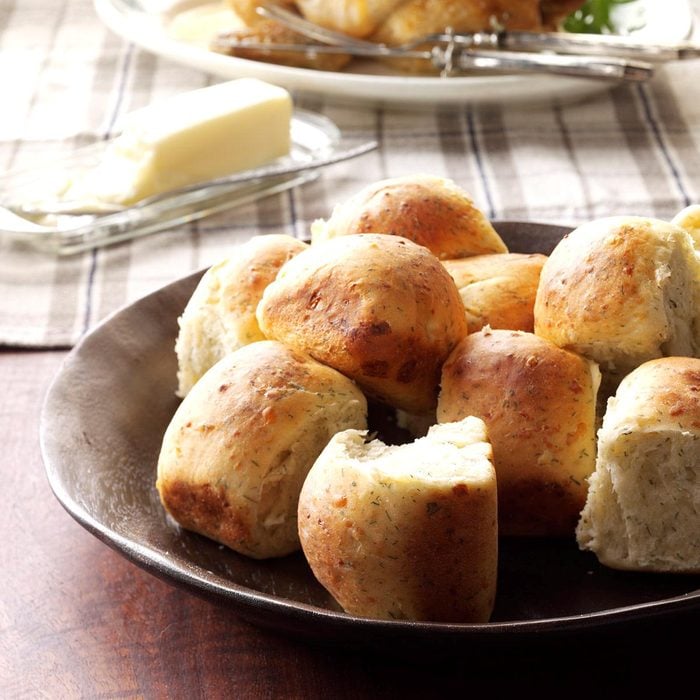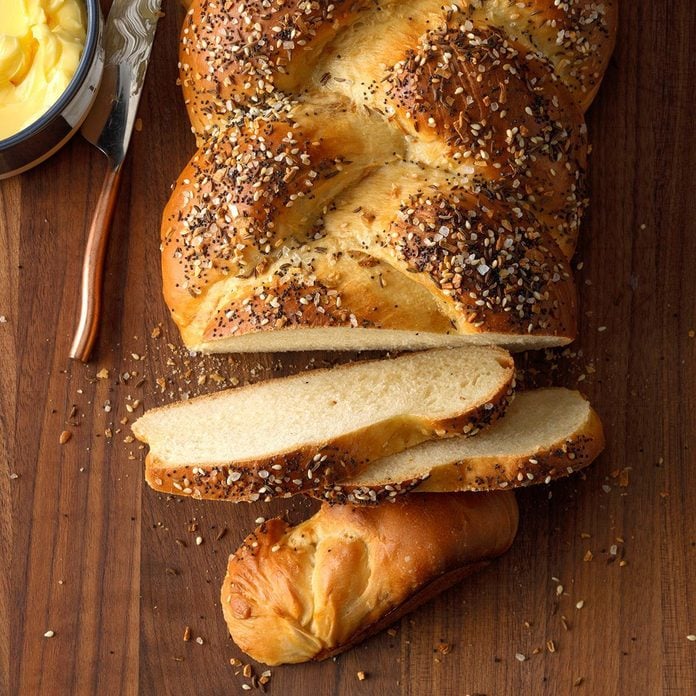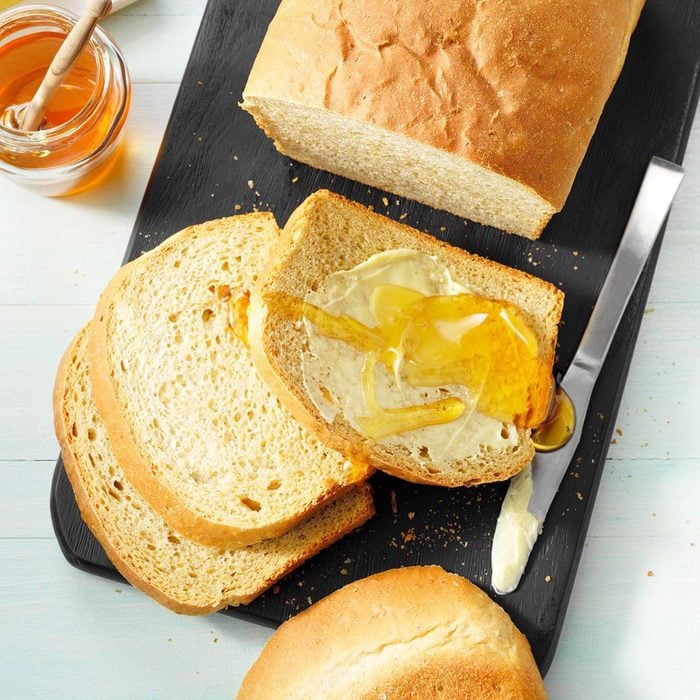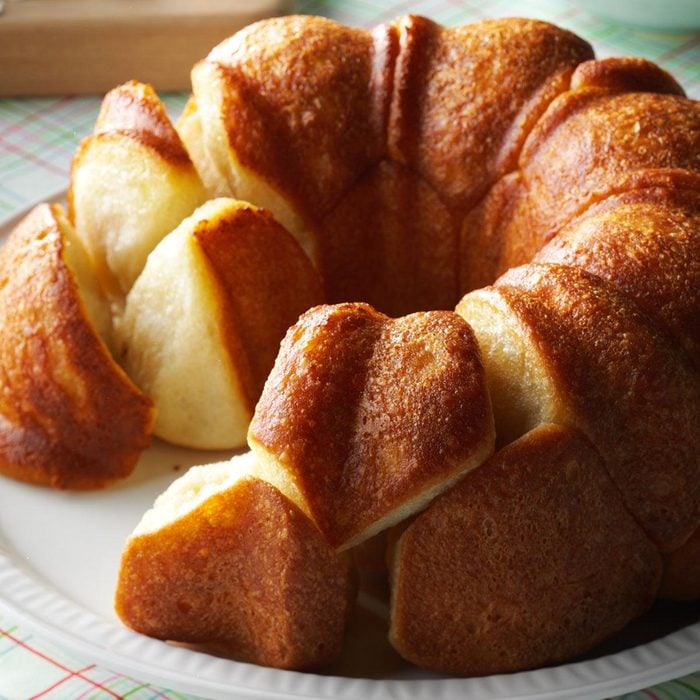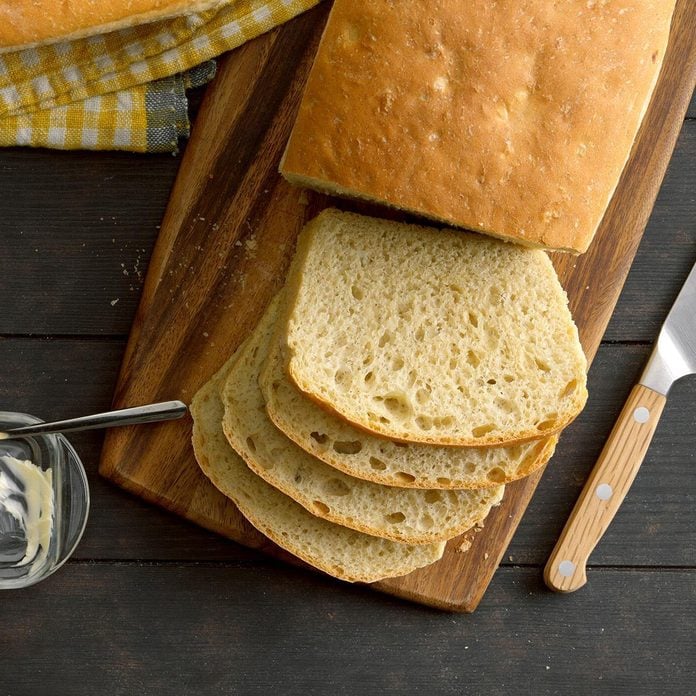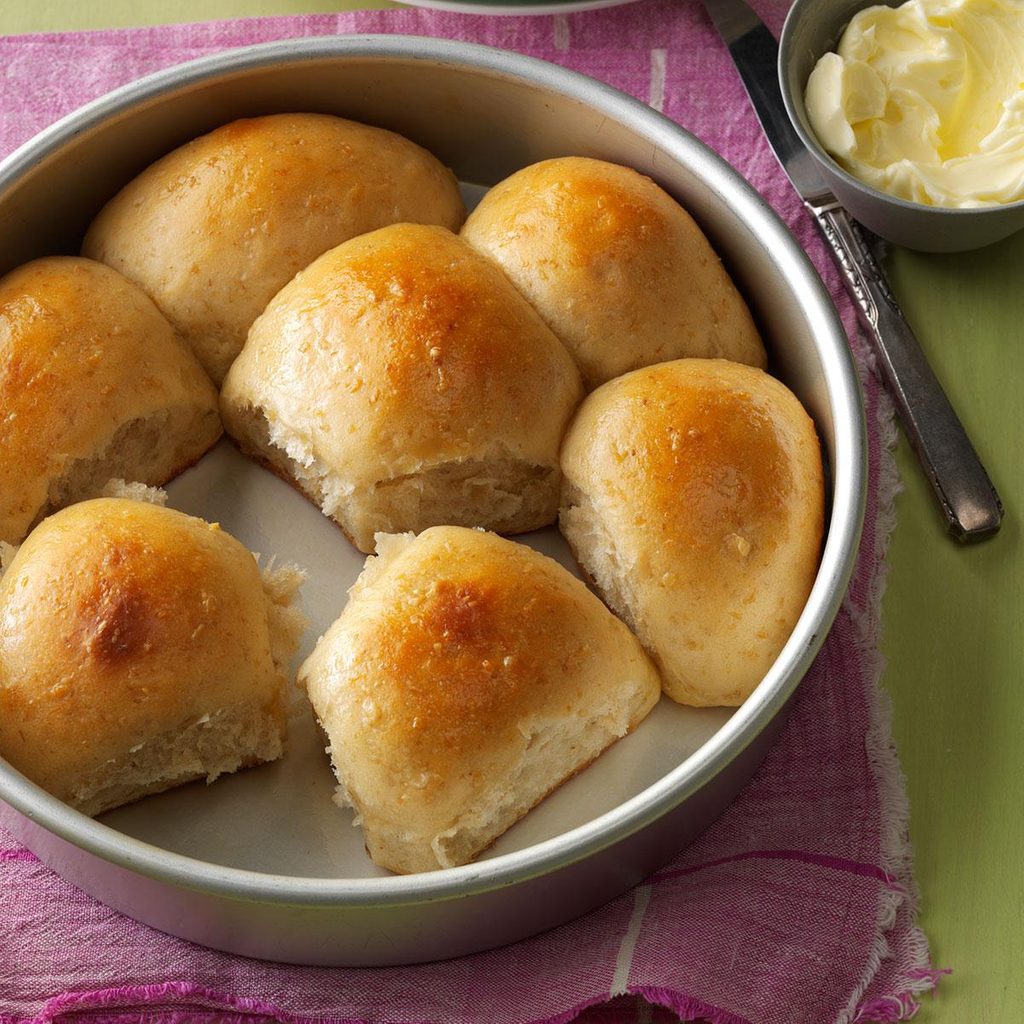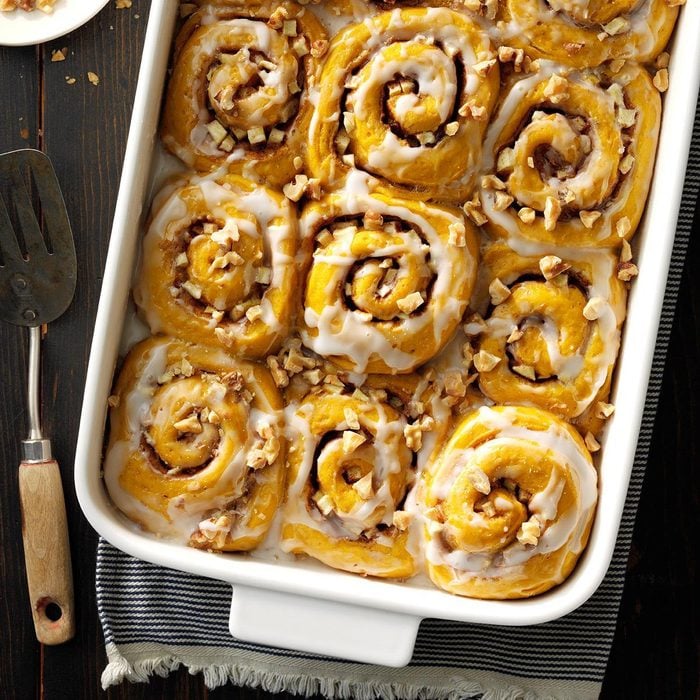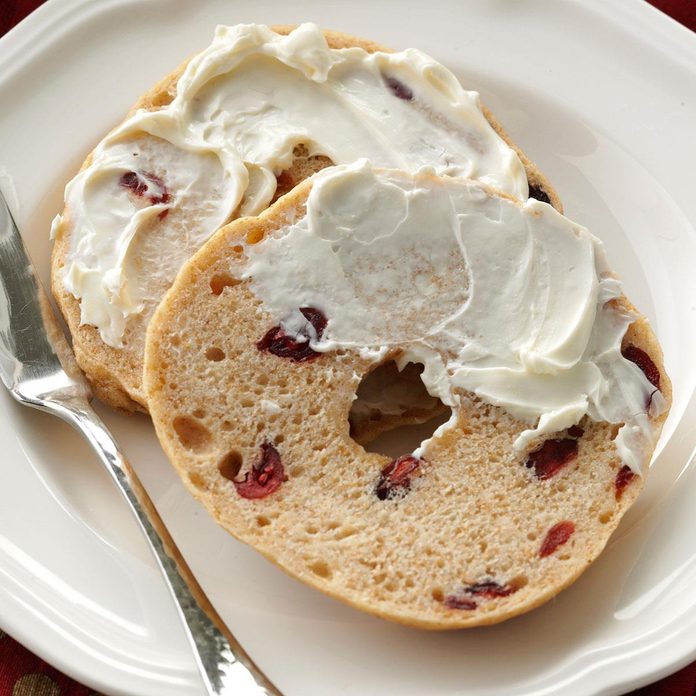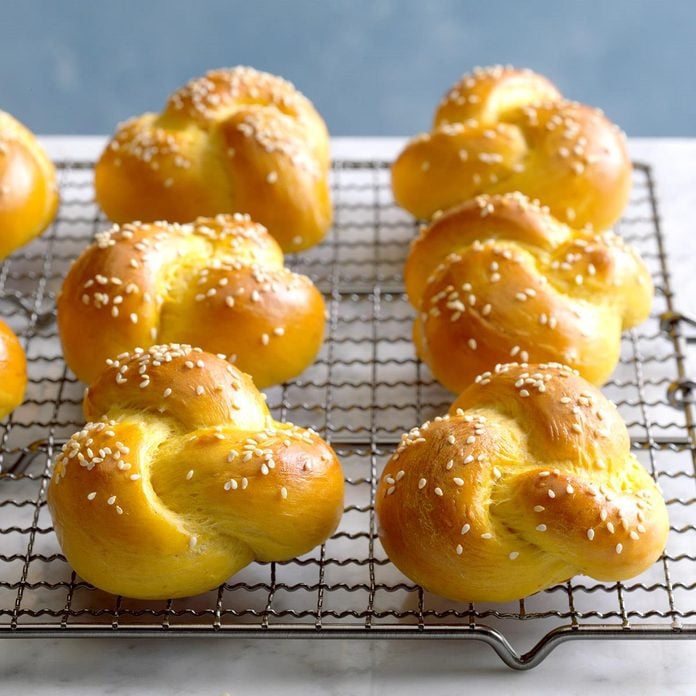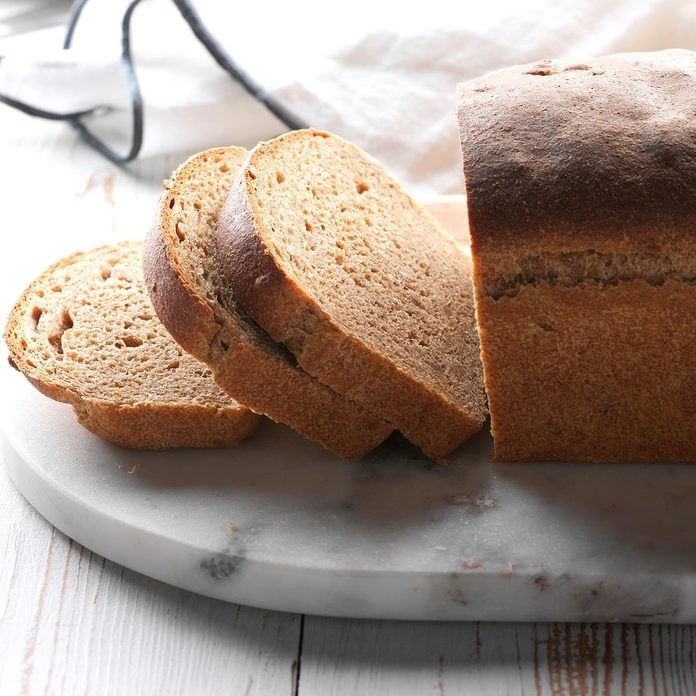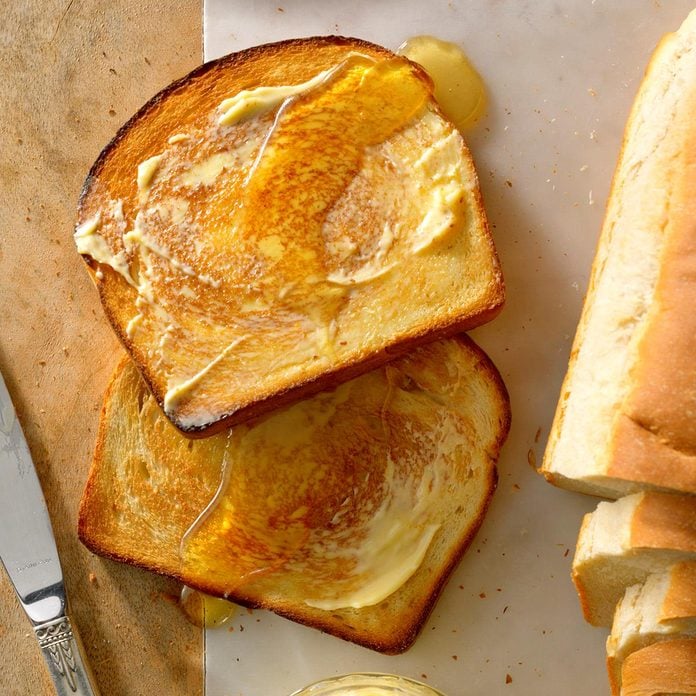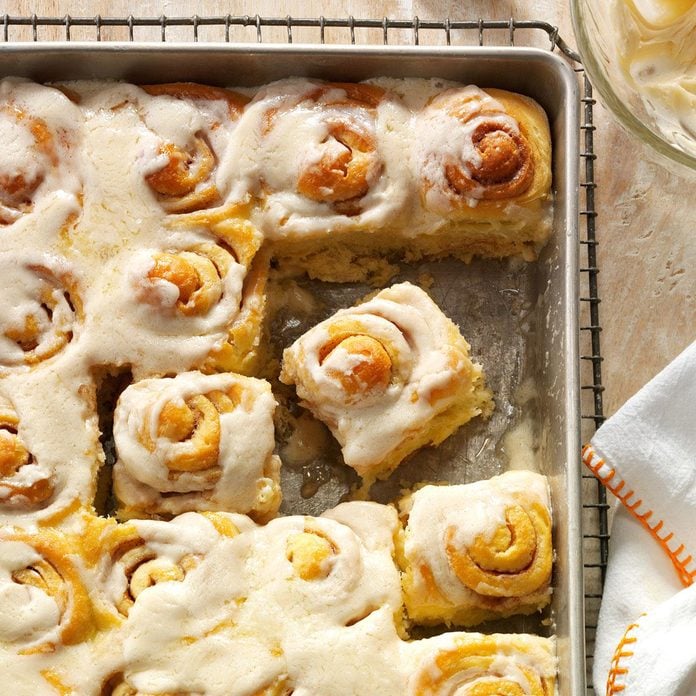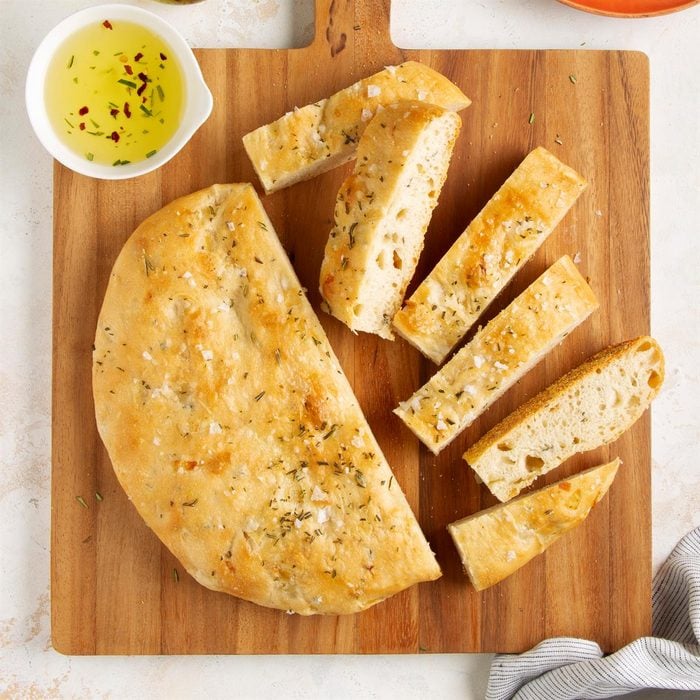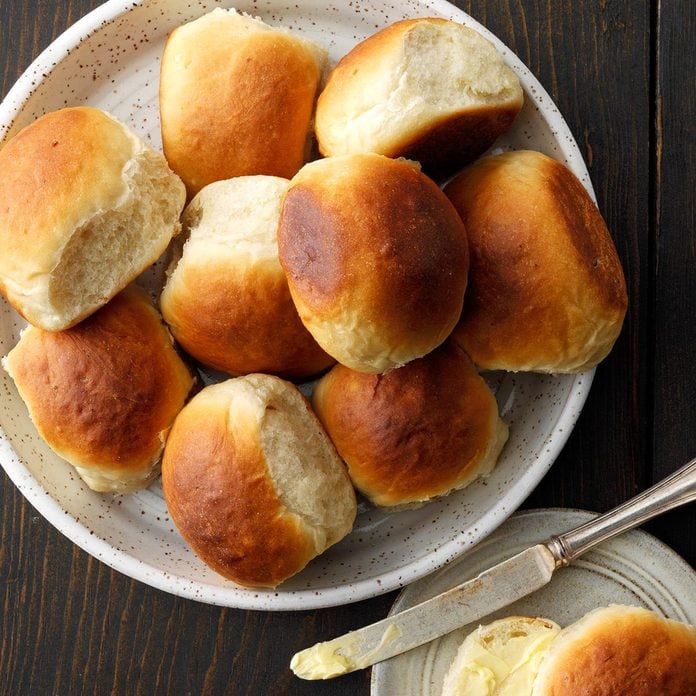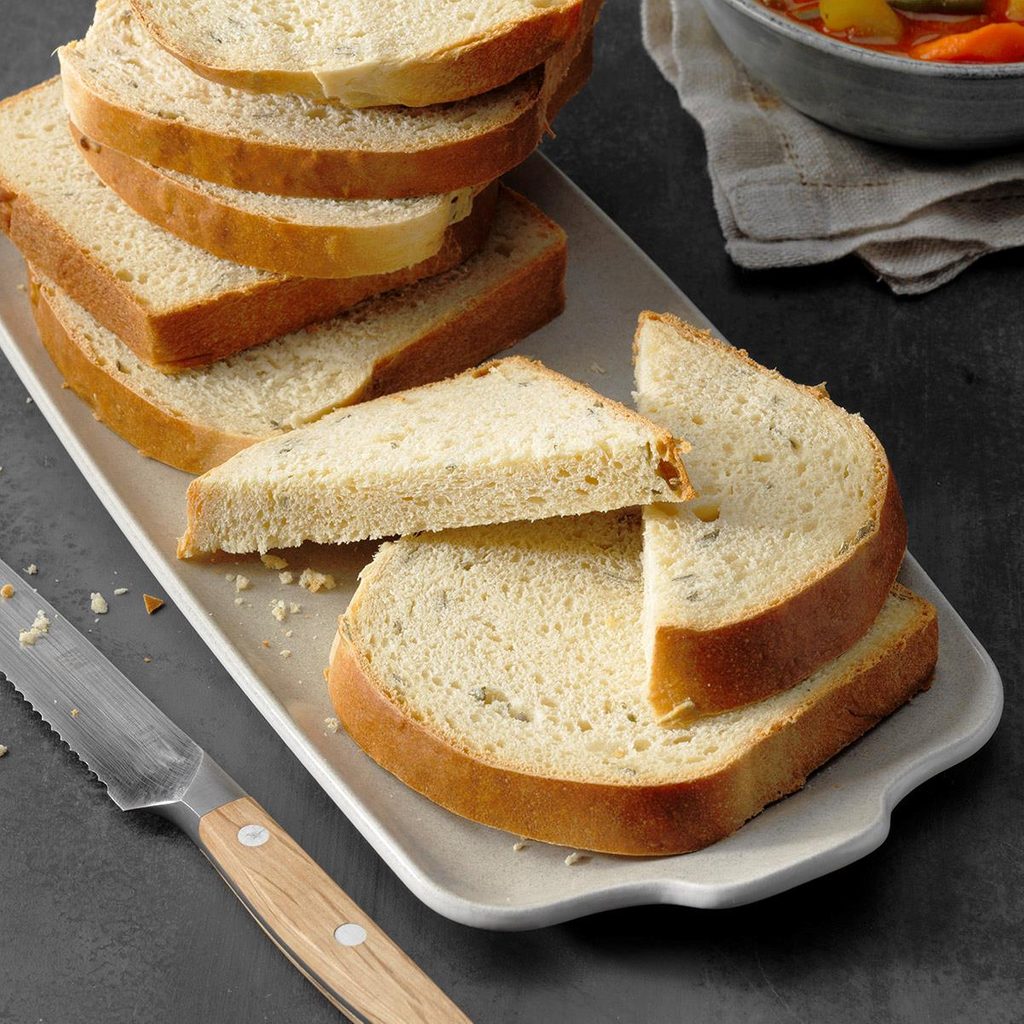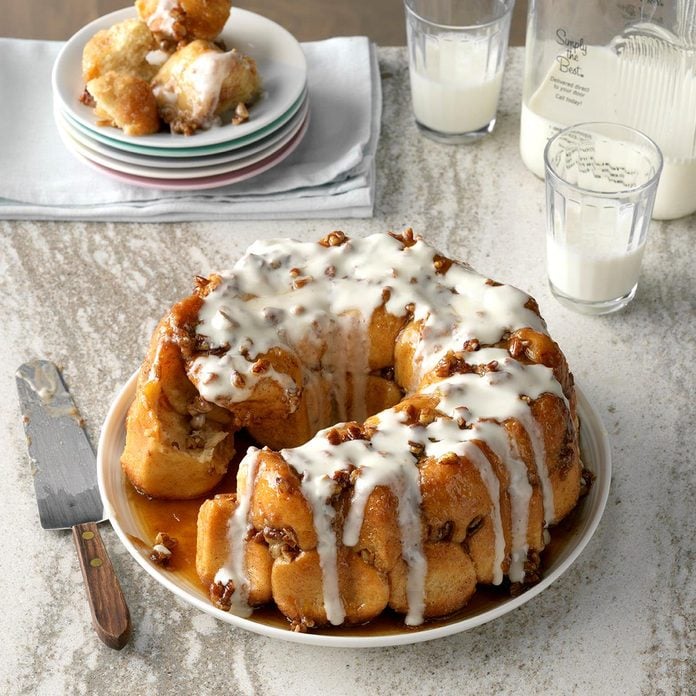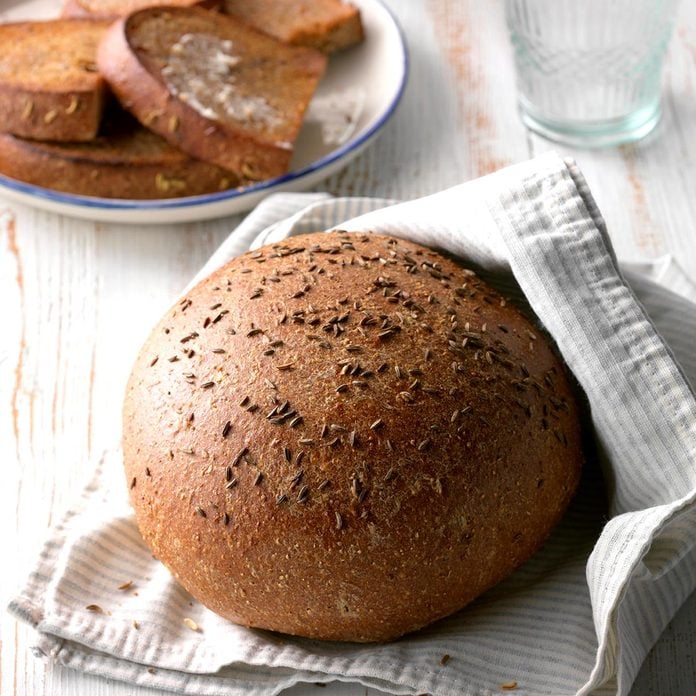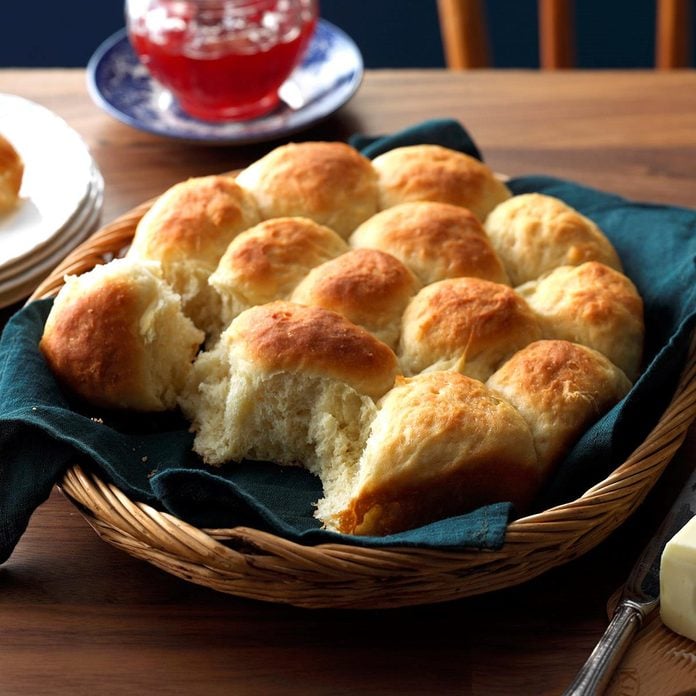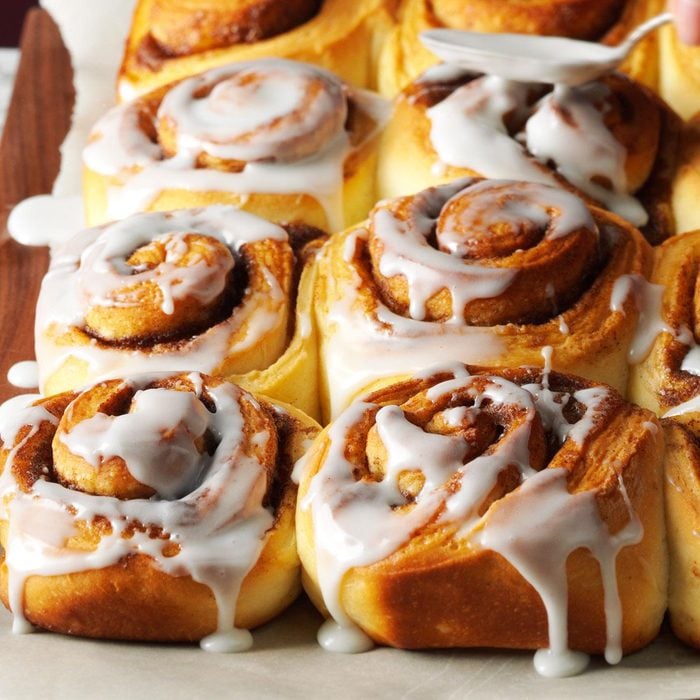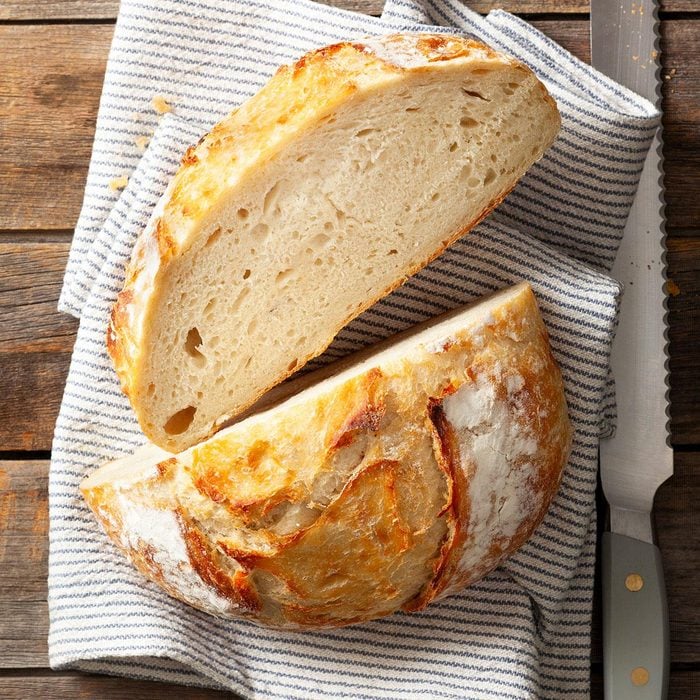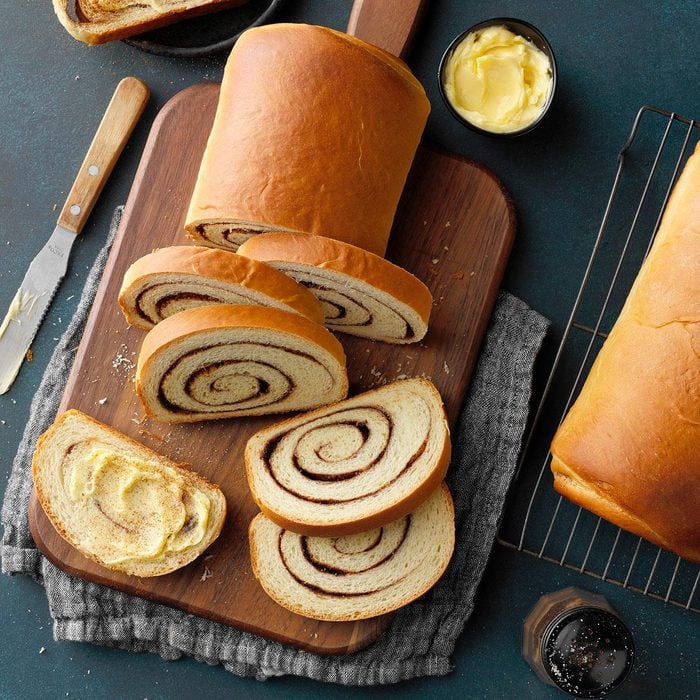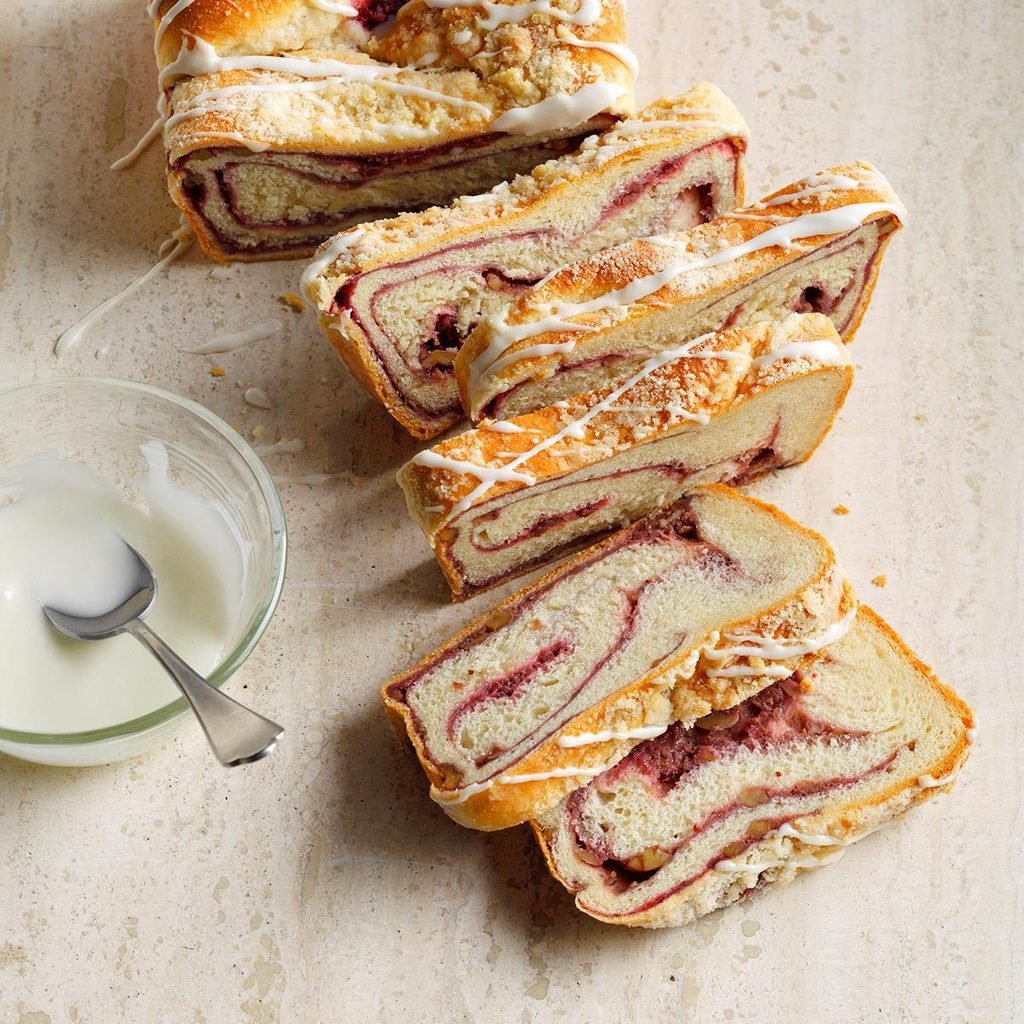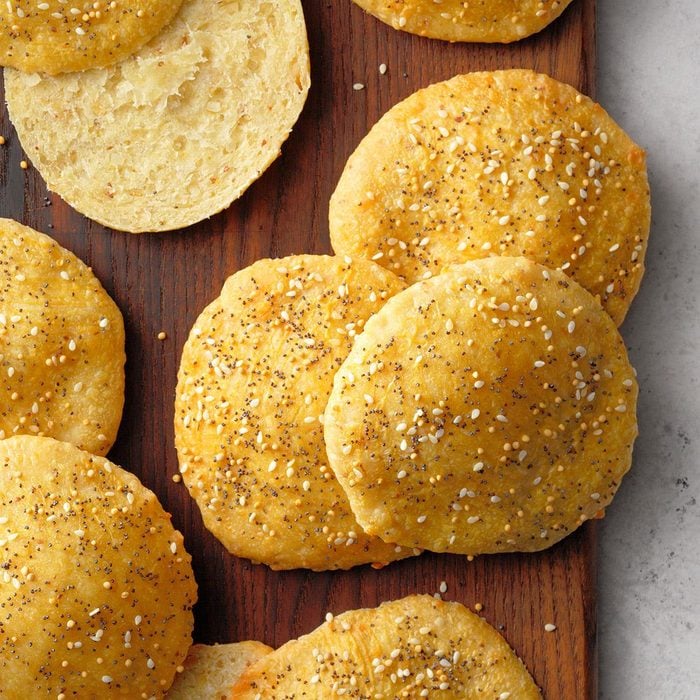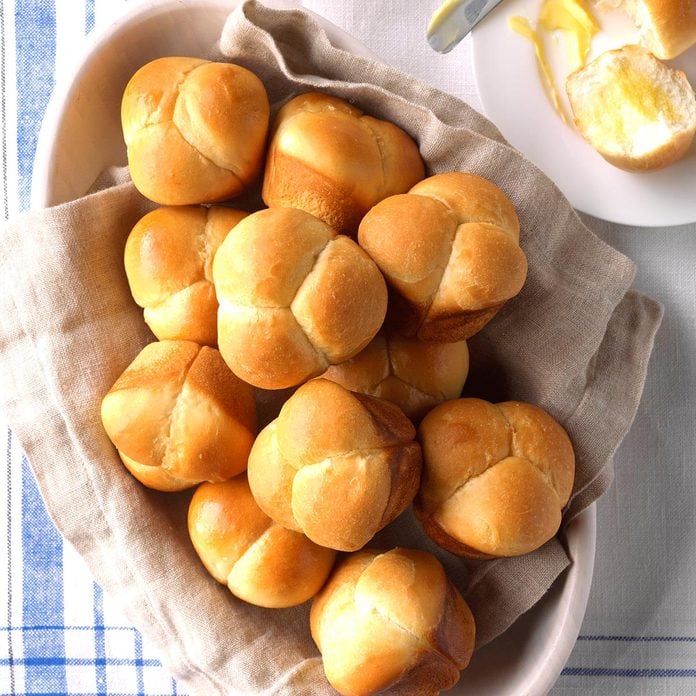ⓘ
Baking easy yeast bread recipes is one of my favorite activities, especially when the temps start to drop and I’m craving all of my favorite comfort foods. To get yeasted bread’s nice and fluffy rise, you’ll need to learn the basics of proofing bread dough.
In short, proofing dough is the last rise before throwing it into the oven to bake. Do keep in mind that proofing yeast and proofing bread dough are two separate steps. Proofing yeast is when you mix warm water, yeast and a touch of sugar to start the fermentation process. Whereas proofing bread dough, also known as the final fermentation, is when you let the dough rise between 75 and 80ºF. This process can be done in either a glass bowl at room temperature, the oven, a slow cooker or a proofing box.
4 Ways to Proof Bread Dough
Here are four tried-and-true ways to proof bread in cold and warm kitchens alike. Once your bread is proved, follow these steps to make yeast bread.
1) Proof at Room Temperature
The traditional way to proof bread is in a glass bowl at room temp. (You can also use a proofing basket, or a bread tin if you want to create a specific shape.) This route is perfect for nice and toasty kitchens, especially during the warmer months.
To proof, cover the bowl with a damp paper towel or cloth. If your bowl is deep enough, use cling wrap. If working with a particularly sticky dough, rub the tiniest amount of oil onto some cling wrap to help prevent the dough from sticking (a spritz of cooking spray works, too).
Test Kitchen tip: Mark the outside of the glass bowl when you place the dough inside, so you won’t have to eyeball whether or not it doubled in size.
2) Proof Bread in the Oven
You may be wondering, can I really use my oven to proof bread? The answer is yes! Our go-to method for proofing bread when it’s a bit cold inside is to pop the dough in the oven. And nope—you won’t be turning it on!
To proof bread in the oven, place a glass baking dish on the bottom rack of the oven and fill it with boiling water. Stash your dough on the middle or top rack and shut the door. The steam and heat from the boiling water will create a warm and steamy environment for the dough—exactly what you want for a good rise.
If your bread requires a longer proof, like this chocolate babka, I recommend refreshing the hot water every 30 to 45 minutes to keep things working.
3) Proof Bread with a Slow Cooker
Think you couldn’t love your slow cooker more? Well, it turns out you can use this appliance to proof bread dough. Fill your slow cooker halfway with water and set to the low setting (which will heat the water to about 200ºF). Put the lid on upside down, lay a dishtowel on top, then set your bowl of dough on top. The radiant heat from the hot water will help the bread rise.
4) Use a Proofing Box
If you’re a serious bread baker, you might want to skip the homemade shortcuts and invest in a bread-making tool that helps you proof. A proofing box will maintain a consistent temperature and humidity inside, allowing you to get a perfect rise every single time. With a perfect yeast-friendly environment, this proofing box can help you proof bread a bit quicker than room temp, too. That’s a big win for serious bakers! That means more loaves of the good stuff in less time.
A Few More Nontraditional Proofing Methods
While we swear by the oven and boiling water method, you can still try a few other ways to proof bread even when it’s a touch too cold inside.
You can set a heating pad on low, layer a dishtowel on top and then set down your bowl or pan of dough. This will give your bread some extra warmth. We recommend covering your dough with a tea towel or reusable wrap to keep the outside from drying out. If you have a rice-filled heating pad (the kind you heat in the microwave), you can use that as well.
If you’re a serious gardener, you can pull out a seed germination mat and use that as well. Set the temperature to around 80ºF for a nice rise.
Of course, you can also take a reading of your oven’s internal temperature with the oven light on. Some oven lights radiate enough heat to turn the oven into a proofing box. Use an oven thermometer and check the temperature after about 30 minutes. If your light manages to heat the oven to 75ºF or above, you’re in baking business!
Common Bread Proofing Questions
Not sure what to do with your flat, underproofed loaf? Or maybe you need to step away from the kitchen and want to slow down the proofing process while you’re away? Allow us to answer your troubling bread proofing questions so you can achieve that beautiful rise in no time.
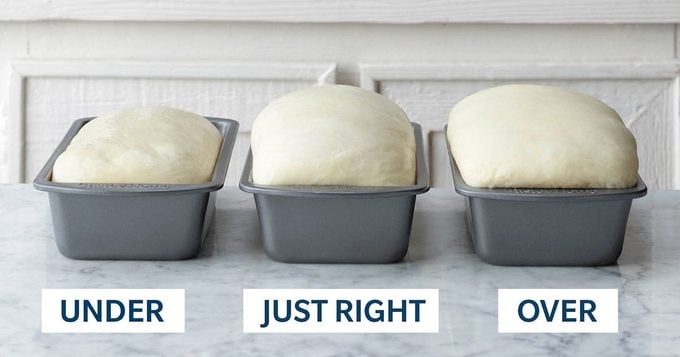 taste of home
taste of home
How do you know when bread is done proofing?
Bread dough that’s done proofing will have a full, puffed appearance. Your loaf should have expanded to roughly twice its size. To test if your dough has proofed long enough, gently poke it. It should feel soft and supple, and your finger should leave an indent in the dough. Find out exactly how long it takes for dough to rise.
If your bread doesn’t see enough proofing time, it won’t rise properly. You’ll wind up with a flat, dense doorstop rather than a lovely, fluffy loaf.
On the flip side, bread can rise for too long. If you overproof, your dough will wind up collapsing. If you have a problem with overproofing, try letting the dough rise for a shorter period of time or at a cooler temperature.
What should you do if your dough is underproofed?
If your bread dough isn’t rising, the yeast might be past its prime or your water may have been the wrong temperature (too hot and the yeast will die; too cold and the yeast won’t grow). Always use fresh yeast and invest in a thermometer to help your yeast get the job done. You’ll be on your way to a perfect loaf of homemade bread in no time.
Test Kitchen tip: Place your bread on an oven rack (while off) and place a pan of hot water underneath the rack. The warm steam will wake up the yeast and help it along, especially if your kitchen is cold.
How do you fix overproofed dough?
You can fix overproofed dough by kneading and pushing the air out of the dough. Then, reshape and place your bread back into your desired proofing container. Allow it to proof as normal and bake.
How do I stop my bread from proofing?
You can stop bread from proofing by putting the dough in a cold place, like your refrigerator. Colder temperatures will slow down the proofing process.
Do you score bread before or after proofing?
Always score bread after proofing. Otherwise, your bread will explode where your scored cuts are.
Get Baking with Our Coziest Yeast Breads
Dutch Oven Bread
Crackling homemade
Dutch oven bread makes an average day extraordinary. Enjoy this beautiful crusty bread recipe as is, or stir in a few favorites like cheese, garlic, herbs and dried fruits. —
Catherine Ward,
Taste of Home Prep Kitchen Manager
Go to Recipe
Apple Dumpling Pull-Apart BreadI converted a basic sweet dough into this incredible apple-filled pull-apart loaf. The results are anything but basic. It takes time, but I guarantee it's worth it. Using both sauces is twice as tasty. —Gina Nistico, Denver, Colorado
Rosemary Garlic BraidThis moist savory bread pairs nicely with a variety of main dishes. It's great with soup...and makes a wonderful grilled ham and cheese sandwich. I came up with the recipe a few years ago when I wanted to use up the fresh rosemary in my garden.
-Cori Oakley, Traverse City, Michigan
Brioche RollsAt 10 o'clock each morning, it's coffee time at our house. Friends, neighbors and relatives stop by just to grab a bite of these brioche rolls fresh from the oven. —Wanda Kristoffersen, Owatonna, Minnesota
Maple Bacon BreadSwirled with maple syrup, raisins, bacon and brown sugar, this crave-worthy maple bacon bread is one they'll remember. Plus, the dough is easy to work with and roll out! —Alicia Rooker, Milwaukee, Wisconsin
Pumpkin Dinner RollsFor a delicious roll at your Thanksgiving dinner table, try this roll. It is a very easy yeast roll recipe and are on the table in no time.—Connie Thomas, Jensen, Utah
Wild Rice & Cranberry LoavesThis is an incredibly fragrant bread with lots of texture from wild rice and dried cranberries. It's hearty enough for sandwiches, but with a touch of honey, I could even eat this for dessert! —Barbara Miller, Oakdale, Minnesota
Pumpkin-Shaped RollsThese cute pumpkin-shaped rolls are worth the effort. They're a festive fall favorite in my household. If you don't have pumpkin on hand, try using sweet potato. —Veronica Fay, Knoxville, Tennessee
Sesame Wheat BraidsWhen I started making this bread, my husband and our six children liked it so much that I was baking every day! I was thrilled when the judges at our county fair gave these braids both a blue ribbon and a best of show award! —Nancy Montgomery, Hartville, Ohio
Oat Dinner RollsThese soft rolls are out of this world. The addition of oat makes them a little heartier than other dinner rolls. —Patricia Rutherford, Winchester, Illinois
Dutch-Oven Raisin Walnut BreadOn a cold day, nothing is better than a warm, crusty Dutch oven raisin bread filled with walnuts. —Catherine Ward,
Taste of Home Prep Kitchen Manager
Honey Whole Wheat RollsMost of the farmers in our area grow wheat, so this recipe definitely represents my region. I bake these rolls often, especially when I'm making soup or stew. —Celecia Stoup, Hobart, Oklahoma
Cinnamon Swirl Breakfast BreadField editor Peggy Burdick of Burlington, Michigan sends the recipe for this lovely breakfast bread. She notes, "My aunt gave me the recipe for these pretty, rich-tasting loaves many years ago. I use my bread machine for the first step in the recipe.
Honey-Squash Dinner RollsPuffy dinner rolls take on rich color when you add squash to the dough. Any squash variety works—I've even used cooked carrots. —Marcia Whitney, Gainesville, Florida
Gouda and Roasted Potato BreadOur family tried roasted potato bread at a bakery on a road trip, and I came up with my own recipe when we realized we lived much too far away to have it regularly. It makes for a really amazing roast beef sandwich and also goes well with soups. —Elisabeth Larsen, Pleasant Grove, Utah
Pumpkin Egg BraidI developed this bread to celebrate our two favorite holidays, Thanksgiving and Hanukkah. Try it with flavored butters, and use leftovers for French toast or sandwiches. —Sara Mellas, Hartford, Connecticut
Glazed Cranberry Swirl LoafThis is one of my favorite recipes to serve during the holidays. Without the filling, it makes a nice soft, chewy bread for any regular day! —Chris Carattini, Chadron, Nebraska
Soft Buttermilk Dinner RollsWarm, buttery dinner rolls are absolutely irresistible. I save time and use a stand mixer to make my dough. —Jennifer Patterson, Shoshone, Idaho
Maple Butter TwistsMy stepmother gave me the recipe for a delicious yeast coffee cake shaped into pretty rings. When I make it for friends, they always ask for seconds. —June Gilliland, Hope, Indiana
Dilly RollsThese versatile rolls are so welcome served warm alongside any dinner. I always make a big batch since my family enjoys them after they're cool, too, stuffed with a filling like egg salad or ham salad. —Mary Bickel, Terre Haute, Indiana
Everything BreadI love to make bread from scratch and this has become one of our tried-and-true favorites to serve with any meal, casual or formal. —Traci Wynne, Denver, Pennsylvania
Old-Fashioned Brown BreadThis chewy, old-fashioned bread boasts a slightly sweet flavor that will transport you back to the old days. —Patricia Donnelly, Kings Landing, New Brunswick
Buttery Bubble BreadHomemade bread can be time-consuming, difficult and tricky to make. But this fun-to-eat monkey bread, baked in a fluted tube pan, is easy and almost foolproof. If I'm serving it for breakfast, I add some cinnamon and drizzle it with icing. —Pat Stevens, Granbury, Texas
Savory Stuffing BreadPoultry seasoning and celery salt make this hearty loaf taste like just like stuffing. It's the perfect bread to serve with turkey during the holidays, and it's nice for making sandwiches with the leftovers. —Betsy King, Duluth, Minnesota
Oatmeal Dinner RollsThese fluffy rolls go perfectly with any meal. They have a delicious homemade flavor that's irresistible. I like them because they're not hard to make and they bake up nice and high. —Patricia Staudt, Marble Rock, Iowa
Autumn Sweet Rolls with Cider GlazeI love cooking with pumpkin because it’s versatile, colorful and nutritious. Combining it with chopped apple and cider gives these glazed rolls their autumn appeal. —Jennifer Coduto, Kent, Ohio
Cranberry Whole Wheat BagelsThe bagel recipes I saw in a magazine inspired me to try creating my own. I've been making them like crazy ever since! My whole wheat version dotted with cranberries is a favorite. —Tami Kuehl, Loup City, Nebraska
Pumpkin Knot RollsThese rolls are the lightest, most delicious ones I've ever tasted...and everyone else seems to agree. The pumpkin gives them mild flavor, moist texture and a pretty golden color. At our house, it wouldn't be the holidays without them. —Dianna Shimizu
Issaquah, Washington
Sunflower Seed & Honey Wheat BreadI've tried other bread recipes, but this one is a staple in our home. I won $50 in a bake-off with a loaf that I had stored in the freezer. —Mickey Turner, Grants Pass, Oregon
Milk-and-Honey White BreadMy dad has been a wheat farmer all his life and my state is the wheat capital, so this recipe represents my region and my family well. This bread never lasts too long at our house. —Kathy McCreary, Goddard, Kansas
Can't-Eat-Just-One Cinnamon RollsMy cinnamon rolls have been known to vanish quickly. Once I dropped off a dozen rolls for my brothers, and they emptied the pan in 10 minutes. —Regina Farmwald, West Farmington, Ohio
Rosemary FocacciaThe savory aroma of rosemary in this classic bread is simply irresistible. This rosemary focaccia bread tastes great as a side dish with any meal, as a snack or as a pizza crust.
Contest-Winning Potato Pan RollsBeautiful color and a light-as-a-feather texture make these rolls our family's favorite for holiday meals. I won the reserve champion award at a 4-H yeast bread competition with this recipe. —LeAnne Hofferichter-Tieken, Floresville, Texas
Sage-Apple Cider BreadWho knew sage and apple cider would create such a fantastic bread? This versatile loaf that has just a hint of sweetness makes wonderful sandwiches or stuffing. —Christine Wendland, Browns Mills, New Jersey
Caramel-Pecan Monkey BreadThe kids will get a kick out of pulling off gooey pieces of this delectable monkey bread. It's hard to resist a caramel-coated treat. —Taste of Home Test Kitchen
Rustic Rye BreadThis gorgeous rye bread has just a touch of sweetness and the perfect amount of caraway seeds. With a crusty top and firm texture, it holds up well to sandwiches, but a pat of butter will do the job, too. —Holly Wade, Harrisonburg, Virginia
Easy Potato RollsAfter I discovered this recipe, it became a mainstay for me. I make the dough ahead of time when company is coming, and I try to keep some in the refrigerator to bake for our ranch hands. Leftover mashed potatoes are almost sure to go into these rolls. —Jeanette McKinney, Belleview, Missouri
Overnight Cinnamon RollsI like to try different fun fillings in these soft rolls, and each one is packed with cinnamon flavor. They are definitely worth the overnight wait. —Chris O'Connell, San Antonio, Texas
Crusty Homemade BreadCrackling homemade bread makes an average day extraordinary. Enjoy this beautiful crusty bread recipe as is, or stir in a few favorites like cheese, garlic, herbs and dried fruits. —Megumi Garcia, Milwaukee, Wisconsin
Cinnamon Swirl BreadYour family will be impressed with the soft texture and appealing swirls of cinnamon in these buttery breakfast loaves. —Diane Armstrong, Elm Grove, Wisconsin
Cranberry Swirl LoafMy mother's made this bread for years, but she uses date filling. I loved her bread so much that I made my own, with cranberries for a slightly tart filling with the sweet streusel topping—sometimes I add a simple icing. Each slice reveals an enticing ruby swirl. —Darlene Brenden, Salem, Oregon
Triple Mustard and Gruyere Bread ThinsAs a bread baker, I’m always experimenting with new flavor combinations. My mustard and Gruyere bread has become my all-time favorite for sandwiches. The bread elevates every sandwich to gourmet status. —Veronica Fay, Knoxville, Tennessee
Icebox RollsI remember my mom making these rolls almost every Saturday so they'd be ready to bake on Sunday for company or someone just dropping by. Although they take a little time to prepare, they're really not all that difficult to make. And there's nothing in the stores that can compare to them! —Jean Fox, Welch, Minnesota



